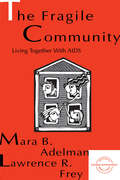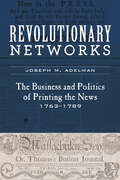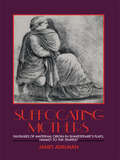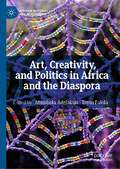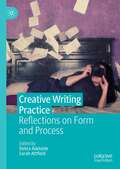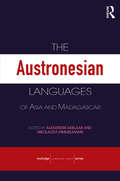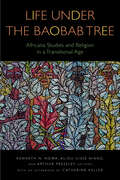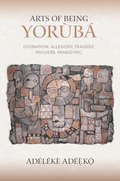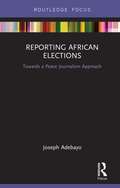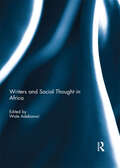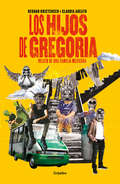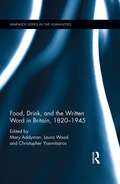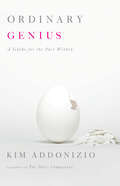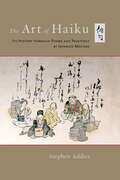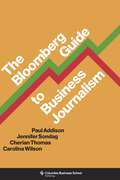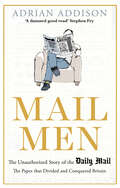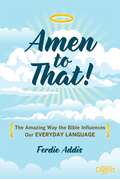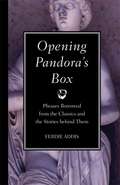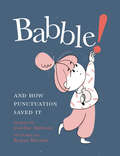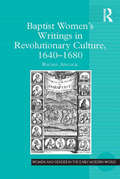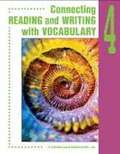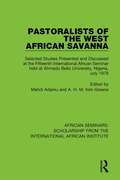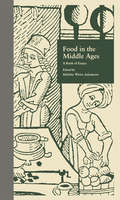- Table View
- List View
The Fragile Community: Living Together With Aids (Everyday Communication Ser.)
by Mara B. Adelman Larry R. FreyThis book examines the concept of "community," focusing on how communication practices help manage the tensions of creating and sustaining everyday communal life amidst the crisis of human loss. While acknowledging how the contradictory and inconsistent nature of human relationships inevitably affects community, this intimate and compelling text shows how community is created and sustained in concrete communication practices. The authors explore these ideas at Bonaventure House, an award-winning residential facility for people with AIDS, where the web of social relationships and the demands of a life-threatening illness intersect in complex ways. Facing a life-threatening illness can defy meaningful social connections, but it can also inspire such ties, sometimes in ways that elude us in the course of daily life. By understanding how collective communication practices help residents forge a sense of community out of the fragility and chaos of living together with AIDS, we are able to better understand how communication is inexorably intertwined with the formation of community in other environments. Based on seven years of ethnographic research including participant-observation, in-depth interviews, and questionnaires, this book weaves together narratives and visual images with conceptual analysis to uncover the ongoing oppositional forces of community life, and to show how both mundane and profound communication processes ameliorate these tensions, and thereby sustain this fragile community. Because the average length of stay for a resident is seven months -- in which time he or she moves from being a newcomer to a community member to someone the community remembers -- the text reflects this short, but crystallized life, starting with the day a new resident opens the door to the day he or she passes away. The writing is rich -- intimate, engaging, personal, compelling, and vivid. The stories told discuss such deeply personal topics as the dilemmas of romantic relationships in a context fraught with many perils; issues of power, authority, and control that enable and constrain social life; and communicative practices that help residents cope with bereavement over the loss of others as well as their own impending deaths. The text concludes by examining the lessons learned from Bonaventure House about creating and sustaining a health community, and serves as an inspiration for strengthening interpersonal relationships and communities in other environments.
Revolutionary Networks: The Business and Politics of Printing the News, 1763–1789 (Studies in Early American Economy and Society from the Library Company of Philadelphia)
by Joseph M. AdelmanAn engrossing and powerful story about the influence of printers, who used their commercial and political connections to directly shape Revolutionary political ideology and mass mobilization.Honorable Mention, St. Louis Mercantile Library Prize, Bibliographical Society of AmericaDuring the American Revolution, printed material, including newspapers, pamphlets, almanacs, and broadsides, played a crucial role as a forum for public debate. In Revolutionary Networks, Joseph M. Adelman argues that printers—artisans who mingled with the elite but labored in a manual trade—used their commercial and political connections to directly shape Revolutionary political ideology and mass mobilization. Going into the printing offices of colonial America to explore how these documents were produced, Adelman shows how printers balanced their own political beliefs and interests alongside the commercial interests of their businesses, the customs of the printing trade, and the prevailing mood of their communities. Adelman describes how these laborers repackaged oral and manuscript compositions into printed works through which political news and opinion circulated. Drawing on a database of 756 printers active during the Revolutionary era, along with a rich collection of archival and printed sources, Adelman surveys printers' editorial strategies. Moving chronologically through the era of the American Revolution and to the war's aftermath, he details the development of the networks of printers and explains how they contributed to the process of creating first a revolution and then the new nation.By underscoring the important and intertwined roles of commercial and political interests in the development of Revolutionary rhetoric, this book essentially reframes our understanding of the American Revolution. Printers, Adelman argues, played a major role as mediators who determined what rhetoric to amplify and where to circulate it. Offering a unique perspective on the American Revolution and early American print culture, Revolutionary Networks reveals how these men and women managed political upheaval through a commercial lens.
Suffocating Mothers: Fantasies of Maternal Origin in Shakespeare's Plays, Hamlet to the Tempest
by Janet AdelmanAn original reading of Shakespeare's plays illuminating his negotiations with mothers, present and absent, and tracing the genesis of Shakespearean tragedy and romance to a psychologized version of the Fall.
Art, Creativity, and Politics in Africa and the Diaspora (African Histories and Modernities)
by Abimbola Adelakun Toyin FalolaThis book explores the politics of artistic creativity, examining how black artists in Africa and the diaspora create art as a procedure of self-making. Essays cross continents to uncover the efflorescence of black culture in national and global contexts and in literature, film, performance, music, and visual art. Contributors place the concerns of black artists and their works within national and transnational conversations on anti-black racism, xenophobia, ethnocentrism, migration, resettlement, resistance, and transnational feminisms. Does art by the subaltern fulfill the liberatory potential that critics have ascribed to it? What other possibilities does political art offer? Together, these essays sort through the aesthetics of daily life to build a thesis that reflects the desire of black artists and cultures to remake themselves and their world.
Creative Writing Practice: Reflections on Form and Process
by Debra Adelaide Sarah AttfieldCreative Writing Practice: reflections on form and process explores the craft of creative writing by illuminating the practices of writers and writer-educators. Demonstrating solutions to problems in different forms and genres, the contributors draw on their professional and personal experiences to examine specific and practical challenges that writers must confront and solve in order to write. This book discusses a range of approaches to writing, such as the early working out of projects, the idea of experimentation, of narrative time, and of failure. With its strong focus on process, Creative Writing Practice is a valuable guide for students, scholars and practitioners of creative writing.
The Austronesian Languages of Asia and Madagascar (Routledge Language Family Ser. #Vol. 7)
by Alexander Adelaar Nikolaus P. HimmelmannSome 800 Austronesian languages are spoken in the area extending from Madagascar to eastern Indonesia and to the north to Taiwan and the Philippines. They vary greatly in almost every possible respect, including the size and social make-up of the speech communities and their typological profiles. This book is designed to serve as a reference work a
Life Under the Baobab Tree: Africana Studies and Religion in a Transitional Age (Transdisciplinary Theological Colloquia)
by Shola Adegbite An Yountae Desmond D. Coleman Salim Faraji Rachel E. Harding Minenhle Nomalungelo Khumalo Althea Spencer Miller Pamela Mordecai Rev Canon Hugh R. Page Jr. A. Paige Rawson Nimi Wariboko Sharon Kimberly Williams Catherine KellerLife Under the Baobab Tree: Africana Studies and Religion in a Transitional Age is a compendium of innovating essays meticulously written by early and later diaspora people of African descent. Their speech arises from the depth of their experiences under the Baobab tree and offers to the world voices of resilience, newness/resurrection, hope, and life. Resolutely journeying on the trails of their ancestors, they speak about setbacks and forward-looking movements of liberation, social transformation, and community formation. The volume is a carefully woven conversation of intellectual substance and structure across time, space, and spirituality that is quintessentially “Africana” in its centering of methodological, theoretical, epistemological, and hermeneutical complexity that assumes nonlinear and dialogical approaches to developing liberating epistemologies in the face of imperialism, colonialism, racism, and religious intolerance.A critical part of this conversation is a reconceptualization and reconfiguration of the concept of religion in its colonial and imperial forms. Life Under the Baobab Tree examines how Africana peoples understand their corporate experiences of the divine not as “religion” apart from its intimate connections to social realities of communal health, economics, culture, politics, environment, violence, war, and dynamic community belonging. To that end Afro-Pessimistic formulations of life placed in dialogic relation Afro-Optimism. Both realities constitute life under the Baobab tree and represent the sturdiness and variation that anchors the deep ruptures that have affected Africana life and the creative responses. The metaphor and substance of the tree resists reductionist, essentialist, and assured conclusions about the nature of diasporic lived experiences, both within the continent of Africa and in the African Diaspora.
Arts of Being Yoruba: Divination, Allegory, Tragedy, Proverb, Panegyric
by Adélékè AdéèkóThere is a culturally significant way of being Yorùbá that is expressed through dress, greetings, and celebrations—no matter where in the world they take place. Adélékè Adék documents Yorùbá patterns of behavior and articulates a philosophy of how to be Yorùbá in this innovative study. As he focuses on historical writings, Ifá divination practices, the use of proverbs in contemporary speech, photography, gendered ideas of dressing well, and the formalities of ceremony and speech at celebratory occasions, Adéékó contends that being Yorùbá is indeed an art and Yorùbá-ness is a dynamic phenomenon that responds to cultural shifts as Yorùbá people inhabit an increasingly globalized world.
Reporting African Elections: Towards a Peace Journalism Approach (Routledge African Studies)
by Joseph AdebayoThe ability to be divided along ethnic and religious lines is inherent to much of Africa’s media. Such potentially divisive reporting has the ability to incite violence through prejudiced information, particularly during election processes.Reporting African Elections examines the impact of media messages on society, focusing on these electoral processes in Africa. Drawing upon the Peace Journalism approach to political reporting, this book offers a unifying conceptual framework for analysing the role journalists play in ensuring peaceful elections. Joseph Adebayo also looks at the impact training can have on election reportage, studying recent elections in Kenya and Nigeria in order to present a 17-point plan for reporting elections in Africa. Reporting African Elections will be of interest to scholars and students of journalism, peace and conflict studies, and politics.
Writers and Social Thought in Africa
by Wale AdebanwiSocial theory and social theorizing about Africa has largely ignored African literature. However, because writers are some of the continent’s finest social thinkers, they have produced – and continue to produce – works which constitute potential sources for the analysis of social thought, and for constructing social theory, in and beyond the continent.This comprehensive collection examines the relationship between African literature and African social thought. It explores the evolution and aesthetics of social thought in African fiction, and African writers’ conceptions of power and authority, legitimacy, history and modernity, gender and sexuality, culture, epistemology, globalization, and change and continuity in Africa.This book was originally published as a special issue of the Journal of Contemporary African Studies.
Los hijos de Gregoria: Relato de una familia mexicana
by Claudia Adeath Regnar Kristensen«Los hijos de Gregoria vuelve a mirar hacia Los hijos de Sánchez más de cincuenta años después, en un momento en que la economía criminal (robo, drogas, guerra de pandillas) ha alcanzado un nivel mucho más alto. Basado en una profunda empatía y con la confianza de cada uno de los protagonistas del libro, este relato literario y etnográfico evita los juicios de valor y ofrece un recuento honesto de las experiencias de las personas que han sufrido mucho y que han causado mucho sufrimiento.» Claudio Lomnitz Los hijos de Gregoria es un impactante libro testimonial, el crudo relato de una familia mexicana que, como muchas otras, a lo largo ya de varias generaciones, ha sido víctima del fracaso de las políticas sociales en México. Por cerca de ocho años, Regnar Kristensen y Claudia Adeath se dieron a la tarea de entrevistar a Gregoria, a sus seis hijos y a otros miembros cercanos a la familia, para luego recopilar sus historias, atravesadas por las carencias, la falta de educación, la violencia y, sorpresivamente, por la fe, la lealtad y la tragicomedia. Es precisamente esta narración polifónica, este contar de viva voz, lo que retrata a detalle la realidad brutal de lo que día a día ocurre en Esperanza, el barrio en el que viven Goya y los suyos. En la misma línea de Los hijos de Sánchez, de Oscar Lewis, esta investigación, que sigue además un manifiesto personal, desentraña sin piedad las dinámicas familiares en México.
Food, Drink, and the Written Word in Britain, 1820-1945 (Warwick Series in the Humanities)
by Mary Addyman Laura Wood Christopher YiannitsarosThis volume explores the intersection between culinary history and literature across a period of profound social and cultural change. Split into four parts, essays focus on the relationships between eating and childhood reading in the Victorian era, the role of hunger in depicting social instability and reform, the cultivation of taste through advertising and the formation of cultural legacies through imaginative and emotional experiences of food and drink. Contributors show that studying consumption is necessary for a full understanding of class, gender, national identity and the body. The works of writers such as Elizabeth Gaskell, Edward Lear, Isabella Beeton and Bram Stoker are considered alongside advice manuals, Home Front narratives and advertising to provide an innovative work that will be of interest to scholars of social, cultural and medical history as well as literary studies.
Ordinary Genius: A Guide for the Poet Within
by Kim AddonizioIn this fresh approach to writing poetry, the coauthor of the perennially popular The Poet's Companion offers sharp insights into the craft of writing. "The creative process is just that," maintains Kim Addonizio. "Not a means to an end, but an ongoing participation." A widely acclaimed poet and finalist for the National Book Award, Addonizio meditates on her own process as she encourages writers to explore both their personal and political worlds, to seek inspiration from poets new and old, and to discover the rich poetic resources of the Internet. Lively, accessible, and informative, Ordinary Genius?provides wisdom gleaned through personal experience and offers a heady variety of writing exercises. Chapters on gender, addiction, race and class, metaphor and line invite each individual writer to find and to hone his or her unique voice. This is the perfect book for both experienced writers and beginners eager to glimpse the angel of poetry.
The Art of Haiku: Its History through Poems and Paintings by Japanese Masters
by Stephen AddissIn the past hundred years, haiku has gone far beyond its Japanese origins to become a worldwide phenomenon--with the classic poetic form growing and evolving as it has adapted to the needs of the whole range of languages and cultures that have embraced it. This proliferation of the joy of haiku is cause for celebration--but it can also compel us to go back to the beginning: to look at haiku's development during the centuries before it was known outside Japan. This in-depth study of haiku history begins with the great early masters of the form--like Basho, Buson, and Issa--and goes all the way to twentieth-century greats, like Santoka. It also focuses on an important aspect of traditional haiku that is less known in the West: haiku art. All the great haiku masters created paintings (called haiga) or calligraphy in connection with their poems, and the words and images were intended to be enjoyed together, enhancing each other, and each adding its own dimension to the reader's and viewer's understanding. Here one of the leading haiku scholars of the West takes us on a tour of haiku poetry's evolution, providing along the way a wealth of examples of the poetry and the art inspired by it.
The Bloomberg Guide to Business Journalism
by Paul Addison Jennifer Sondag Cherian Thomas Carolina WilsonThe Bloomberg Guide to Business Journalism provides students and professionals with the essential tools for reporting on companies, industries, financial markets, economies, banks, and government policies anywhere in the world. It illustrates how to chronicle capitalism for different audiences—from general consumers of business news to market specialists—and how to present compelling stories across print, web, video, and audio formats.At the heart of the book are exercises and explanations that demonstrate the most appropriate ways to cover a range of business topics. For those looking to begin careers as business journalists, the guide offers step-by-step instructions for reporting and breaking news, emphasizing high standards for accuracy and fairness. Readers will learn key questions to ask when interviewing executives, how to interpret a company financial statement, why markets move, and much more.An engaging and easy-to-understand storyline set in a fictional “Businessworld” accessibly conveys key concepts. The book offers clear advice on reporting, writing, editing, and producing multimedia content for today’s busy readers, listeners, and viewers. Chapters can be used for individual study or university instruction, and material can be customized for settings from a weeklong workshop to a full semester course.This authoritative book shows readers how to excel in business journalism and related communication fields at a time when the media landscape is changing rapidly and dramatically.
Mail Men: The Unauthorized Story of the Daily Mail
by Adrian AddisonDiscover the secret history of the paper that has shaped Britain and taken over the world. Perhaps because of the power and fear that the Daily Mail commands, this is the first book to provide an unauthorized account of the newspaper with more global readers than any other. With a gripping personality-led narrative, informed by sources near the top of the paper, Mail Men investigates the secret behind the Mail's extraordinary longevity and commercial success. But, it also examines the controversies that have beset the paper—from its owner's flirtation with fascism in the 1930s to its fractious relationship with liberals, celebrities and politicians today. Asking why the Mail attracts such anger around the world, Addison explores how insiders view the furore the paper creates both in its print and online incarnation. He also uses his numerous contacts to ask how the paper has stayed relevant for over a century. How has MailOnline built such a huge global audience by focussing on celebrity gossip, in apparent tension with the sometimes puritanical values of its sister print edition? Gripping and revealing, this book gives a previously unseen insight into the colorful cast of senior MailMen (yes, nearly all men) who have molded the paper through the decades—from Alfred C. Harmsworth, the Mail's founder and first owner, a frenetic genius who invented the popular press as we know it, to Martin Clarke, the fearsome Scot who runs MailOnline, the most popular newspaper website in the world.
Amen to That!
by Ferdie AddisMany of us have never read or studied the Bible, yet people have been quoting from its pages for centuries, not knowing the origin or significance of these timeless expressions. Let there be light! Amen to That will delightfully shed clarity on how a collection of ancient stories, written in three languages over the course of a thousand years, has had such an impact on the way we speak today. Through intriguing stories and riveting tales of epic battles and acts of betrayal to miracles and beyond, you'll quickly discover the meanings behind such familiar phrases as: A drop in the bucket All things must pass As old as the hills Bite the dust Eat, drink, and be merry The powers that be Woe is me Amen to That is a wonderful look at the gripping storytelling and cultural wealth to be found in the world's best-selling book, as well as a fascinating insight into our language.
Opening Pandora's Box
by Ferdie AddisAre you known to strike like a thunderbolt when things don't go your way? Are you fortunate enough to have the Midas touch? Have you ever been struck by Cupid's arrow? Classically derived expressions are commonly used in our everyday language, yet many of us have little knowledge of the Greek and Roman influences that inspired them. With Opening Pandora's Box you'll discover the fascinating stories behind familiar phrases like Achilles' Heel, a Nemesis, To Fly too Close to the Sun, and more. For example, did you know that... The lifesaving operation known as the Caesarean section is so named because Julius Caesar was delivered by being cut out of his mother's womb? The original labyrinth was built on the orders of King Minos of Crete after Aphrodite cursed his wife to fall in love with a bull and produce a monstrous baby? The king locked the baby in a maze so complicated and tangled that, once in, he would never emerge. The word cereal is derived from the Italian corn goddess Ceres?Pry open the lid of the English language to find the secrets behind classical phrases we use every day.
Babble!: And How Punctuation Saved It
by Caroline AddersonA village is torn apart by its residents' inability to communicate, until a little girl shares the gift of punctuation in this humorous illustrated parable.Chaos reigns in the village of Babble! All day, the residents fight, yell and argue, and no one is heard or understood . . . until a mysterious little girl arrives and gives the locals something very strange: a period. But what is this thing that looks like a freckle or a spot? The villagers don't even know how to ask. However, as the girl begins to share more gifts — a question mark, quotation marks — the residents slowly learn how to communicate. But when more fights arise and disaster strikes, can punctuation truly save the day?
Baptist Women’s Writings in Revolutionary Culture, 1640-1680 (Women and Gender in the Early Modern World)
by Rachel AdcockAlthough literary-historical studies have often focused on the range of dissenting religious groups and writers that flourished during the English Revolution, they have rarely had much to say about seventeenth-century Baptists, or, indeed, Baptist women. Baptist Women’s Writings in Revolutionary Culture, 1640-1680 fills that gap, exploring how female Baptists played a crucial role in the group’s formation and growth during the 1640s and 50s, by their active participation in religious and political debate, and their desire to evangelise their followers. The study significantly challenges the idea that women, as members of these congregations, were unable to write with any kind of textual authority because they were often prevented from speaking aloud in church meetings. On the contrary, Adcock shows that Baptist women found their way into print to debate points of church organisation and doctrine, to defend themselves and their congregations, to evangelise others by example and by teaching, and to prophesy, and discusses the rhetorical tactics they utilised in order to demonstrate the value of women’s contributions. In the course of the study, Adcock considers and analyses the writings of little-studied Baptist women, Deborah Huish, Katherine Sutton, and Jane Turner, as well as separatist writers Sara Jones, Susanna Parr, and Anne Venn. She also makes due connection to the more familiar work of Agnes Beaumont, Anna Trapnel, and Anne Wentworth, enabling a reassessment of the significance of those writings by placing them in this wider context. Writings by these female Baptists attracted serious attention, and, as Adcock discusses, some even found a trans-national audience.
Connecting Reading and Writing with Vocabulary, Book 4
by Deborah P. AdcockConnecting Reading and Writing with Vocabulary provides a variety of practice activities that will help you build a stronger reading and writing vocabulary. These activities include matching words with their meanings, working with synonyms and antonyms, solving word puzzles, studying word origins, and writing through modeling.
Pastoralists of the West African Savanna: Selected Studies Presented and Discussed at the Fifteenth International African Seminar held at Ahmadu Bello University, Nigeria, July 1979 (African Seminars: Scholarship from the International African Institute #1)
by Mahdi Adamu A. H. M. Kirk-GreeneOriginally published in 1986, this volume deals with various aspects of the life of the pastoralists who live in the area between what was Senegambia and Cameroon. It analyses the changing relations between pastoralists and agricultural peoples, and the changes that pastoral societies are undergoing with urbanisation, increased central government control and the spread of market relations. The papers are in both English and French and include historical studies of aspects of the history of Adamawa, the Fulani, the Twareg, the Shuwa Arabs and the Koyam in pre-colonial times. There is also a survey of the state of Fula language studies and the variety of Fula literature; discussions of the changing nature of pastoralism and the nomadic way of life in Cameroon, Senegal and Nigeria, including the effects of drought.
Renaissance Figures of Speech
by Sylvia Adamson Gavin Alexander Katrin EttenhuberThe Renaissance saw a renewed and energetic engagement with classical rhetoric; recent years have seen a similar revival of interest in Renaissance rhetoric. As Renaissance critics recognised, figurative language is the key area of intersection between rhetoric and literature. This book is the first modern account of Renaissance rhetoric to focus solely on the figures of speech. It reflects a belief that the figures exemplify the larger concerns of rhetoric, and connect, directly or by analogy, to broader cultural and philosophical concerns within early modern society. Thirteen authoritative contributors have selected a rhetorical figure with a special currency in Renaissance writing and have used it as a key to one of the period's characteristic modes of perception, forms of argument, states of feeling or styles of reading.
Food in the Middle Ages: A Book of Essays (Medieval Casebooks Series #12)
by Melitta Weiss AdamsonFirst Published in 1995. Routledge is an imprint of Taylor & Francis, an informa company.
